It’s insane how many bar style LED grow lights have been flooding the market recently.
It seems like every brand is jumping on the bandwagon and Viparspectra is no exception.
The Viparspectra KS series of grow lights features Samsung chips, just like the top brands, but they sell for a much lower price.
This makes them exactly like so many other budget brands trying to take advantage of the surge in bar light popularity.
Is there anything to set these lights apart from the rest of the crowded market?
There is. Viparspectra is an established brand and they have a US service center, meaning their customer service is a bit better than most other budget brands.
Read the rest of this review to learn how the Viparspectra XS series, the Pro series, and the new KS series stacks up against the competition in other areas.
Viparspectra LED Grow Light Series Compared
Viparspectra Pro P2000 Review
I’ve decided to focus the review on the P2000, which is the 200 watt version, because it is the most useful for the average home grower, since it is ideal for a 3 by 3 foot sized grow tent.
Focusing the review on a single model allows me to give specific figures and compare them to the competition. Everything said about the P2000 goes for the P600, P1000, P1500, P2500, and P4000 as well, apart from the specific numbers, like wattage, coverage area, output, etc.
- Uses 200 watts — save about 40% on your electric bill over HID lights
- Equivalent to a 400 watt HID system — but costs less to buy AND to operate
- Great full spectrum white light — works for all stages of growth, though we'd prefer a warmer light (more red)
- 3 by 3.5 foot core coverage — perfect for a 3 x 3 grow tent
- Dimmable — dim from 100% down to 5% to save on electricity costs when full power is not needed
- Incredibly efficient — 2.7 umol/J makes it one of the most efficient grow lights available
- Includes IR light — promotes flowering and boosts yields
- Runs on AC100 to 240V — will work in any country
- Rated for 100,000 hours — 10 years with no need to change bulbs
- 3-year warranty and 30 day money back guarantee — risk-free purchase
Advantages
The biggest advantages of the Viparspectra Pro series are the same as those for any other quantum board type LED grow light: efficiency, great light spread, spectrum, and passive cooling.
The primary advantages of this series over other quantum style lights are a lower price and better quality control and customer service than other deep budget brands. Let’s take a close look at each advantage one by one.
Efficiency
The P2000 delivers 2.7 umol per joule, making it one of the most efficient grow lights on the market. This efficiency is the primary reason quantum style lights have become so popular in recent years. They simply give you more output per watt consumed (and thus, per dollar you spend on electricity).
What’s more, many quantum fixtures use drivers that are dimmable, and this one is no exception. You can dim it from 100% all the way down to 5%. This allows you to save on power costs, when you do not need the full power of the light (like during vegging, cloning or seeding).
Spectrum
The spectrum has always been a huge advantage of quantum style lights and it has actually been improved on even further. First generation quantum boards had only white LEDs, and they all had the same color temperature, usually 3000K, 4000K or 5000K.
The newest generation now features a mix of warmer and cooler light (3500K and 6500K, in the case of the Pro series), with additional red (660 nm) and infrared (730 nm) diodes.
As you can see, the resulting spectrum has a large peak in the blue wavelengths and another peak in the red and orange wavelengths. If you’ve seen other quantum board spectral charts, you’ve probably noticed that they usually contain more red and less blue.
That is because most use warmer white diodes, preferring 3000K to 3500K and 4000K or 5000K to 6500K. We prefer that as well, since more red light is better for flowering. The Pro series spectrum works great, but a warmer spectrum would be better.
The additional red and infrared diodes help during flowering, promoting more and better buds, but a warmer white mix would help even more. That is why we prefer the quantum lights from HLG or Spider Farmer, but obviously, those cost more as well.
Viparspectra’s own XS series has a warmer spectrum, too. Those lights also cost more than the Pro series, but not much more. They are still budget lights.
Light Spread
A more even light spread is another huge advantage. Quantum boards have a bunch of smaller diodes spread out over a larger surface area. This obviously makes for a more even coverage than a fixture that is smaller and has fewer, more powerful, diodes packed into that central area.
Light intensity also deteriorates exponentially as the distance from the source increases, so light that has to travel from a central point to the corners of the coverage area is going to arrive at the canopy much less intense than a light that travels more directly from above.
As you can see in the above PPFD (or PAR) footprint charts, the PPFD in the corners is not much smaller than the PPFD in the center of the coverage area. Most traditional grow lights (HID or LED) have a much higher value in the center, but much lower values in the corners.
That’s great if your growing a single plant, but not if you want multiple plants, across the entire coverage area, to receive sufficient light.
You can also see from the footprints that this light covers a 2 x 4 foot area exceptionally well. Of course, it also covers the 3.5 by 3 foot area the manufacturer claims very well.
This more even light spread is only one advantage of the larger boards with multiple smaller diodes. Better heat dissipation is another.
Heat Dissipation
Having many smaller diodes spread out over a larger surface naturally spreads out the heat those diodes generate as well. The end result is that this fixture does not need any fans to dissipate the heat. Passive cooling is sufficient, in the form of the thin, black aluminum heat sink you see on the top of the light fixture.
Low Price
The Pro series lights cost less than most other quantum board fixtures, and they even cost less than Viparspectra’s XS series, which are also quantum style lights. The reason they cost less is that they use no-name components, instead of Samsung chips and Meanwell drivers.
There are other brands that do the same and also sell for a similar price, but they are not generally reliable. Viparspectra does better quality control and they do a much better job with customer service, but they are definitely not perfect (see the disadvantages section below). They are a deep budget brand, after all.
Good Quality And Service
We’re listing quality control and customer service in the advantages section, because it is an advantage that Viparspectra holds over its primary competition, which are other deep budget brands. As big reason for that is that is has a US location, so customer service requests can be handled more quickly.
However, even with the US location, it still lags behind brands like HLG or Spider Farmer in both quality and service, but those are both more expensive brands, especially the US-made HLG lights.
Disadvantages
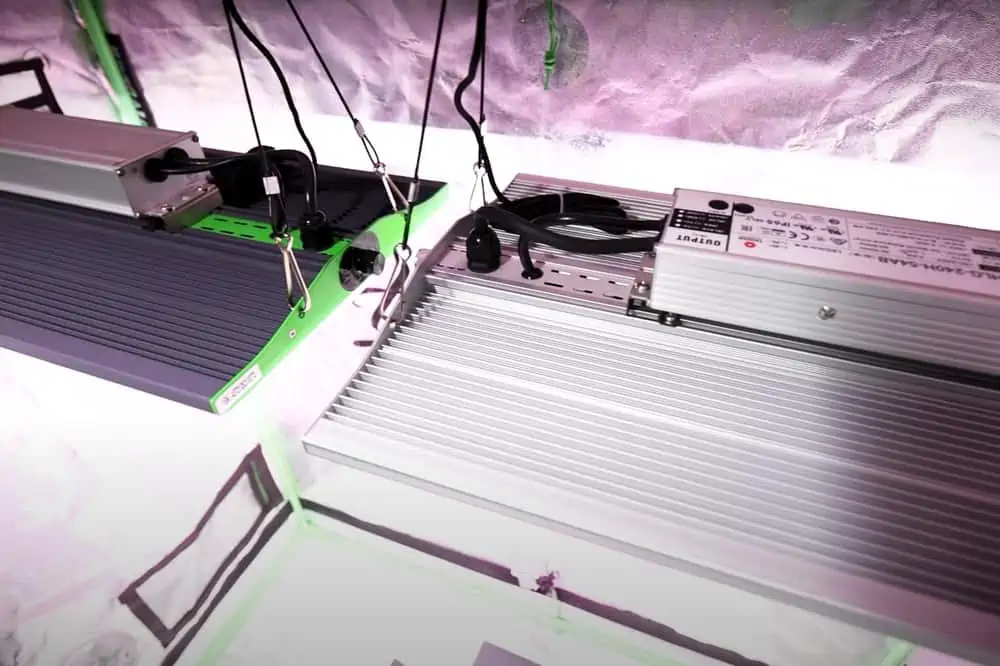
The Viparspectra Pro Series does not have any major disadvantages, especially when you take the low price into consideration. Most of the negatives are things that could also be seen as positives, depending on your needs. That’s why you’ll have already seen many of the following points above in the advantages section.
Spectrum
We’ll begin with the spectrum, because this is a big advantage of all quantum board lights, but depending on your needs, could be a big disadvantage for these particular lights.
As mentioned above, the Pro series spectrum is much cooler (more blue, less red) than most other quantum lights. That is because it uses cooler white diodes than most of the competition. For example, HLG uses 3000K and 4000K white diodes, while Viparspectra uses 3500K and 6500K. The 3500K are slightly cooler than the 3000K, but the 6500K are much cooler than the 4000K.
The result is that these lights are better at vegging, seeding and cloning than any other quantum lights, but they are worse at flowering. They will still do a great job, but a fixture with warmer light will do a better job.
No-Name Components
As mentioned previously, the Pro Series does not use Samsung chips or MeanWell drivers, both of which have become pretty standard on quantum board type of lights. Using no-name replacements obviously keeps the cost down, but these replacements are not as reliable as the name brand parts. They also don’t have a lifetime warranty, like MeanWell drivers do.
Customer Service And Quality Control
We listed both of these under the advantages section. That is because Viparspectra does both better than their direct competition, which are other deep budget brands.
However, they are not nearly as good as the top brands like HLG, so we have to also consider this a disadvantage. In short, if you take the price into consideration, then Viparspectra does well here. If price is no object, they do not.
Viparspectra Pro Series Review: Final Verdict
The Viparspectra Pro P2000 LED grow light is a great addition to the ever more crowded quantum board LED market and the same goes for the rest of the lights in the series.
These fixtures are not nearly as well-made as HLG lights, but they cost far less and definitely outperform their price range. The only real drawback is the blue-heavy spectrum.
And even that is not necessarily a drawback. It is actually an advantage if you need a vegging light and even for flowering, it still works really well. But a light with more red in its spectrum will work better for flowering.
If you want a budget light with more red in the spectrum, check out Viparspectra’s other quantum series the XS (reviewed next below), or go with a Mars Hydro TS or SP series light. Otherwise, the Pro series give you a lot for a low price. That’s why it gets a rating of 4.4 out of 5.
Viparspectra XS2000 Review
We’re going to focus our review of the XS series on the XS2000, because its 3 x 3 foot coverage area makes it most useful for the average home grower. Everything in this review goes for the XS1000, XS1500, and XS4000 as well, apart from the specific figures, like output, coverage area, etc.
- Uses 240 watts — save about 40% on your electric bill over HID lights
- Equivalent to a 400 watt HID system — but costs less to buy AND to operate
- Great full spectrum white light — works for all stages of growth, and especially strong for flowering
- 3 by 3 foot core coverage — perfect for a smaller grow tent
- Dimmable — dim from 100% down to 5% to save on electricity costs when full power is not needed
- Incredibly efficient — 2.7 umol/J makes it one of the most efficient grow lights available
- Samsung LM301B diodes — highly efficient with deeper canopy penetration
- MeanWell HLG driver — industry leading driver with a lifetime warranty
- Includes IR light — promotes flowering and boosts yields
- Runs on AC100 to 240V — will work in any country
- Rated for 100,000 hours — 10 years with no need to change bulbs
- 3-year warranty and 30 day money back guarantee — risk-free purchase
Advantages
The biggest advantages of the Viparspectra XS series are the same as those for any other quantum LEDs: efficiency, great light spread, spectrum, and passive cooling. Their passive cooling is actually a step beyond most other brands.
They also sell for a lower price than many other quantum style lights, despite using the same name brand components (from Meanwell and Samsung).
But they are far from the lowest cost options. Viparspectra’s own Pro series costs less, because it uses no-name components instead.
Spectrum
When quantum lights first hit the market, they revolutionized the industry. Prior to their introduction, most consumers wanted “blurple” lights, with their mix of red and blue diodes and that all-too-familiar pinkish glow.
And that is exactly what most brands offered. There were a few manufacturers that started using COBs on their fixtures, which emitted all-white light. And COB lights quickly gained popularity (read about COB vs. quantum LEDs here) and got more and more growers to consider all-white LEDs.
Quantum lights pushed that much further. Now, it might even be the case that white light is more popular than “blurple” light. Either way, it is close.
What’s the point of all of this? Just that the quantum board spectrum consists of an all-white light, and that the industry as a whole seems to be moving more and more in the direction of white LEDs.
As such, lights like the XS Series offer the spectrum most consumers want these days. It is also a spectrum that is very similar to natural sunlight, with light in every wavelength. This light works exceptionally well to grow and flower plants. It is great in every stage of growth.
The exact makeup of the spectrum does vary a bit from one brand to another. The Viparspectra XS series uses a mix of 3000K and 5000K white diodes, 660 nm red diodes and 730 nm infrared diodes. This gives you a full-spectrum light with a large peak in the red and orange wavelengths and a second peak in the blue wavelengths.
The added infrared and deep red light provides a boost during flowering. It leads to larger flower sites and bigger, and higher quality, yields.
Efficiency
The XS2000 delivers 2.7 umol per joule, making it one of the most efficient grow lights on the market. This efficiency is a result of the LED diodes used. Samsung’s LM301B LED chips are well-known to be the most efficient on the market and to achieve a deep canopy penetration. This means larger yields while using less electricity.
And you can save even more on power costs. The MeanWell driver is dimmable down to 5%, so you can dial back on the power usage when you don’t need full power, like during vegging or cloning, and save yourself some money.
Light Spread
One of the biggest advantages of a light like the Viparspectra XS2000 is the light spread. When light comes from a single source, it spreads out from that source to cover a larger area. The light that reaches the corners of the area it covers has to travel further and is thus much less intense.
This is a big problem with HID lighting and also with LED fixtures that have fewer, more powerful, diodes on a smaller fixture. Quantum boards solved this problem by using weaker diodes, but far more of them, and spreading them out across a much larger area.
The fixtures are much larger, but they result in light not having to travel as far to reach the corners of the coverage area. This means more intensity there. The wider spread of the diodes across a larger fixture leads to a much more even light spread across the coverage area.
Take a look at the PPFD (often falsely referred to as PAR) footprints of the XS2000.
You can see that the values in the corners are still fairly high. With standard grow lights, you generally see values well under 100 in the corners (you want 100 at an absolute minimum to flower plants with a high light requirement, like cannabis), but sky high numbers in the center. The XS lights give you a much better light distribution across the entire coverage area.
No Fans Needed
Using smaller diodes means less heat per diode. And spreading them out with space between them, means the heat they do generate can more easily dissipate.
As a result, these fixtures do not need noisy fans. Fans also tend to break before other components, so not having them avoids that potential hassle.
Other quantum boards simply affix the diodes to an aluminum panel, which is good enough to passively cool them down. Viparspectra takes it a step further here, by using an actual heat sink with deep grooves on it. This means far more surface area to help dissipate heat. This is perhaps the one thing that really sets them apart.
Quality Components
Given the low price of Viparspectra products in general, it is surprising to see them use the same name brand components as the top quantum board brands: MeanWell drivers and Samsung LED chips. It’s even more surprising to see them keep the costs so low.
As you would expect, these lights do have a higher failure rate than the top brands. That should be obvious. But it’s not as high as most deep budget brands and, even better, getting a replacement for a defective fixture is not nearly as hard and time consuming either.
Decent Customer Service
Most Chinese brands have serious customer service issues. Viparspectra has problems, too, but it’s not nearly as bad as most of the others. They have a service center in the US, which means a much faster turnaround time if you need a repair or replacement. Customer service is more responsive than most cheap brands, too.
The 3 year warranty and 30 day money back guarantee are pretty much standard among budget brands these days, but not all of them honor their warranties. Viparspectra does.
Disadvantages
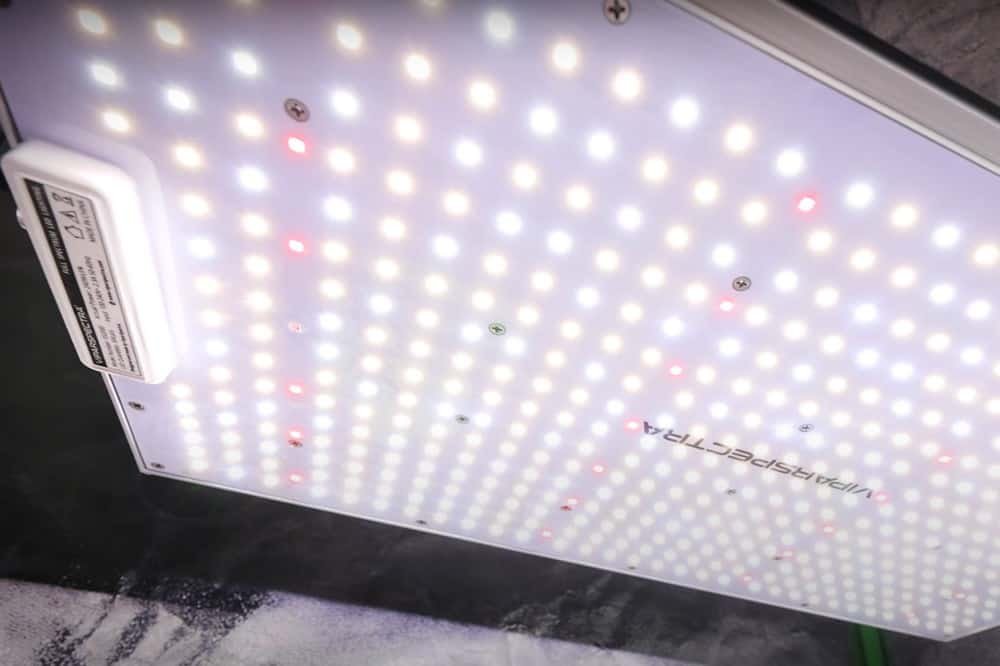
There are no huge disadvantages to these lights. The main things are just the customer service and quality control issues when compared to the top brands. But again, if you compare Viparspectra against their direct competition, which is other deep budget brands, then they actually stack up very well.
Our biggest issue is the naming, which is something we’ve brought up time and again with Chinese brands. At least, Viparspectra is not explicitly calling this a 2000 watt light, but the name XS2000 does suggest that. We obviously understand that they feel they have to do this in order to compete with all of the other brands that also mislabel their lights.
That said, some of the top brands, like HLG and Black Dog give their lights names that reflect their actual wattage, and they do very well. Of course, they are not competing directly against Chinese brands with “3000 watt” lights that sell for $150. Viparspectra are competing against them.
Viparspectra XS Series Review: Final Verdict
The Viparspectra XS2000 LED grow light, as well as the other XS series lights, is yet another quantum board LED fixture with Samsung chips and a MeanWell driver.
It is a crowded field. The XS series positions itself above lights that use no-name components and below top brands or even top budget brands, like Spider Farmer. Even that smaller niche is quite crowded.
How do these lights stand out? Viparspectra is a better brand than most of its direct competition, so you have a smaller chance of getting a defective light and you’ll have less trouble getting a defective light replaced.
Apart from that, you get basically the same thing you get from other brands that make quantum board fixtures with Samsung and MeanWell components: highly efficient fixtures with a great spectrum for plants and a great light spread.
That’s why this series gets a rating of 4.5 out of 5.
Viparspectra KS3000 Review
We’re going to focus our review of the KS series on the KS3000, because it is the most popular size. Everything in this review goes for the KS2500 and KS5000 as well, apart from the specific figures, like output, coverage area, etc.
Advantages
The biggest advantages of the Viparspectra KS series are the same as those for any other bar-style LEDs: efficiency, great light spread, spectrum, and passive cooling.
The Viparspectra lights also sell for a lower price than many other bar lights, despite using the same name brand Samsung diodes. But there are a number of other good brands that sell similar lights for a similar price. It is a crowded field.
We won’t go into too much detail on this series below, since the advantages and disadvantages are basically the same as those for the other two Viparspectra series we just reviewed above.
The bottom line is that there are a few brands that are basically equal. I’ll let you know in the ‘final verdict’ sectio below what I would do, if I were trying to decide between them.
Spectrum
The Viparspectra KS series uses a mix of 3000K and 5000K white Samsung diodes, and 660 nm red diodes by Osram. This gives you a full-spectrum light with a large peak in the red and orange wavelengths and a second peak in the blue wavelengths.
This spectrum is very similar to competing brands. Some may have additional IR and UV diodes, but the benefits of those are limited (if there are any).
Efficiency
The KS3000 delivers 3.1 umol per joule, making it one of the most efficient grow lights on the market. This efficiency is a result of the LED diodes used. Samsung’s LM301B LED chips are well-known to be the most efficient on the market and to achieve a deep canopy penetration.
This means larger yields while using less electricity. Even better, you ca dim the diodes to save on electricity costs when you don’t need to the full output, for example during vegging. Again, this is all very similar to the top competing brands like Spider Farmer and Mars Hydro, which use the same Samsung chips and diodes.
Light Spread
One of the biggest advantages the bar style LED grow lights is their more even light spread. It is similar to the quantum style lights, for the reasons already explained above.
Take a look at the PPFD footprints of the KS3000 for vegging and blooming.
You can see that the values in the corners are only slightly lower than those in the middle. This is an incredibly even footprint and ensures plants around the outside of the coverage area get almost as much light as those in the middle.
Heat Dissipation
The other big advantage of any bar LED light is heat dissipation. Since there is open eair between each bar, heat can dissipate much more easily. But the lights do still generate heat.
Many people mistakenly believe these light generate less heat (probably because of misleading claims from manufacturers). That is simply not true.
LED chips always generate heat. The quantum and bar style fixtures use smaller chips that generate less heat, but they use more of them. The overall heat generated is still about the same.
But because the chips are more spread out, and there is pen air between each bar, the heat is not as concentrated and it can dissipate more easily. However, you still need to provide ventilation and a constant airflow, to get the heat out of the tent.
Just because these lights do not need fans to stay cool enough to prevent damage to the circuits, that does not mean you will not need fans to keep your tent from overheating.
These lights just make heat management easier and they don’t make any noise, unlike traditional fixtures with noisy fans. The fans also tended to break down eventually, needing to be replaced.
Quality Components
As mentioned, all of the better budget brands from China now use the same Samsung diodes. Viparspectra does not use MeanWell drivers on these fixtures, but brands don’t seem to use those for bar style lights. That was a feature of the quantum lights, because they were all copying HLG (who don’t even use them anymore).
Decent Customer Service
We’ve already talked about this above. Everything we said for the other two series goes for this one as well.
Disadvantages
The disadvantages of bar lights are a higher cost, and that is the case here too. The KS series costs more than the other two series we reviewed above. That said, it is priced lower than the top brands, and on par with other budget brands.
Apart from that, there are the standard disadvantages of buying from a Chinese brand, which we have already discussed above.
Viparspectra KS Series Review: Final Verdict
The Viparspectra KS3000 LED grow light, as well as the other KS series lights, is yet another bar style LED fixture with Samsung chips. Most budget brands have their own version of these lights nowadays.
They are meant as lower-cost alternatives to the Spyder lights by Fluence and the Gavita bar fixtures. Those cost 2 to 3 times more and honestly, the difference is not worth it.
These cheaper lights are just as good. The main difference is better quality control, but the top Chinese brands do much better wit that these days. They also have US service centers, so you can get replacements much more quickly.
The real competition for the KS series are the other two big Chinese brands: Spider Farmer and Mars Hydro. Personally, I rank them Spider Farmer first, Viparspectra second, and Mars third. But the difference is so small, that you could easily reverse that.
If I were trying to decide which bar style light to get, I would look at all three brands (see Spider Farmer here and Mars Hydro here) and see which one has a fixture that best fits the size requirements of my grow room.
If two brands (or all three) had the exact light I needed, I’d see which one was selling for less at the moment and go with that one. If the difference in price is small, I’d go in the order mentioned above: Spider Farmer first, Viparspectra second, and Mars Hydro third.
In other words, the Viparspectra KS series of lights is practically tied for the best value on the market. If you want the absolute best lights, spend 2 to 3 times as much and get a Gavita. Otherwise, this is one of the top 3 options. That’s why this series gets a rating of 5 out of 5.
Viparspectra Review: Final Thoughts
Viparspectra has come a long way and is now one of the top 3 budget brands on the market. All of their lights offer incredible value and customer service and quality control have improved a lot. Both still lag behind top USA made LED grow lights like HLG, but they are far better than most Chinese brands.
Whether you go with Viparspectra, Spider Farmer or Mars Hydro, you will get a lot of light for your money. Yes, you could save more and buy lights directly from China, but the risks of doing that (not to mention the hassle, given the current shipping issues) are too high for most. Viparspectra, and the other two brands, are the best choice for most, and they are the lights I would buy right now, too.
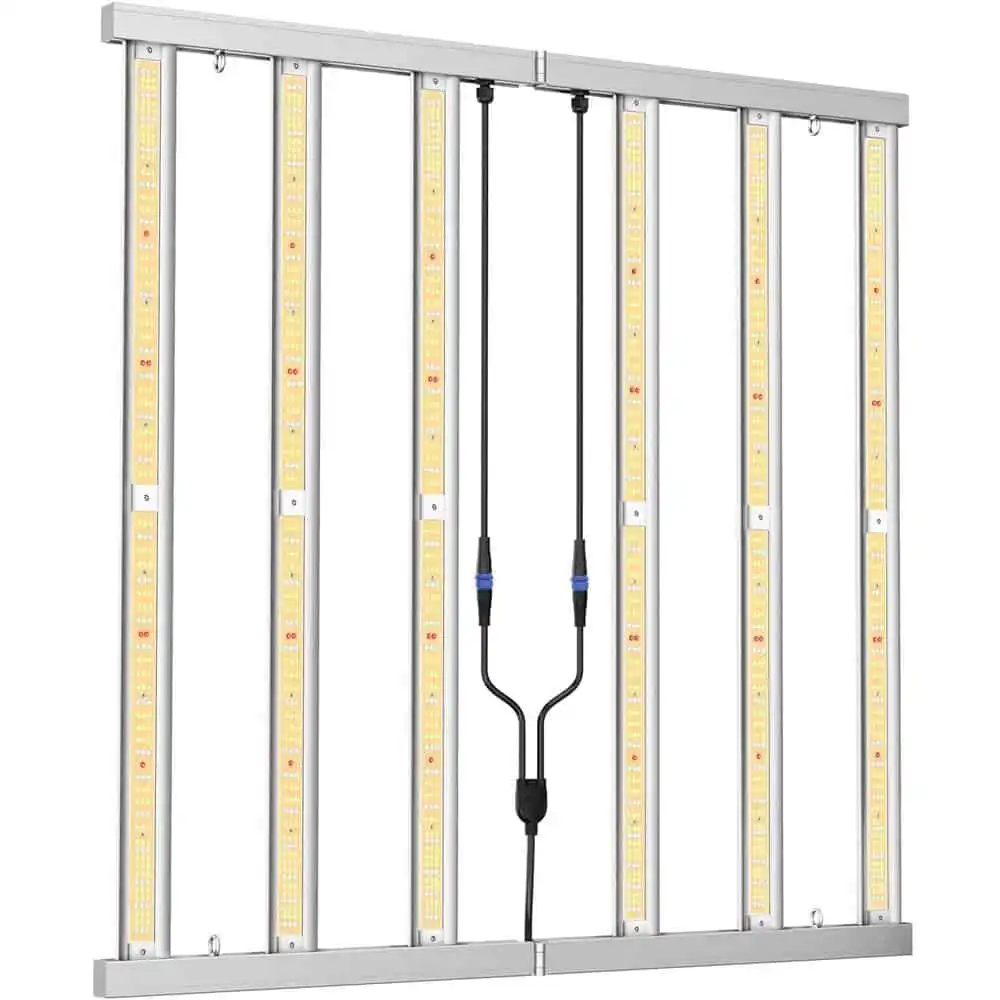
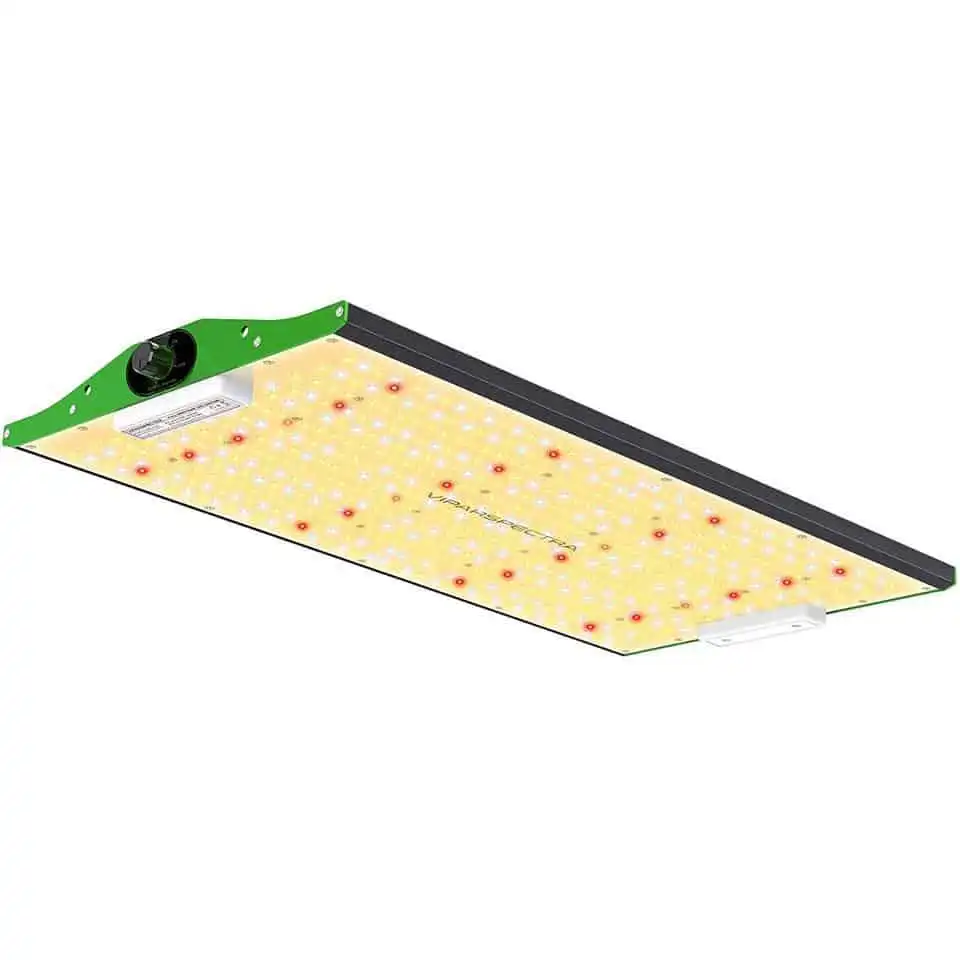
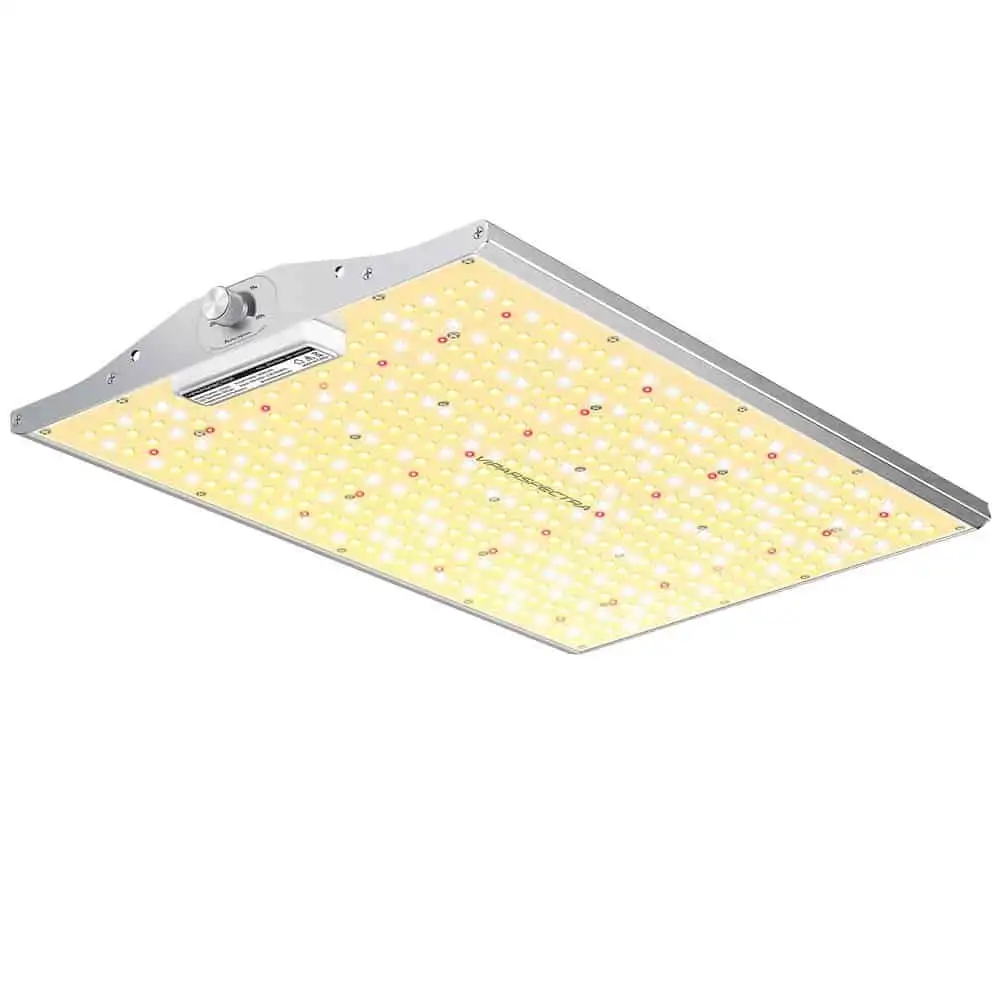
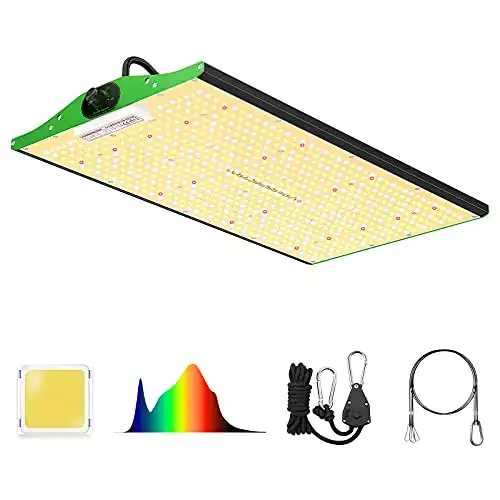
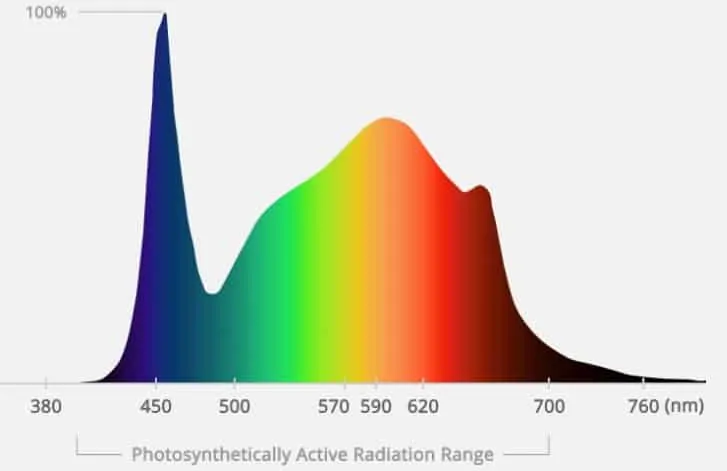
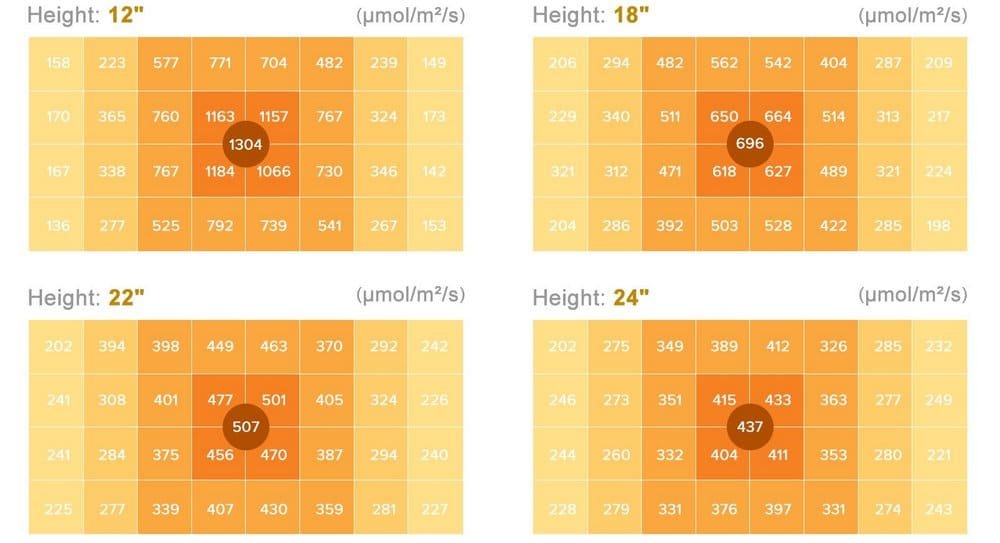
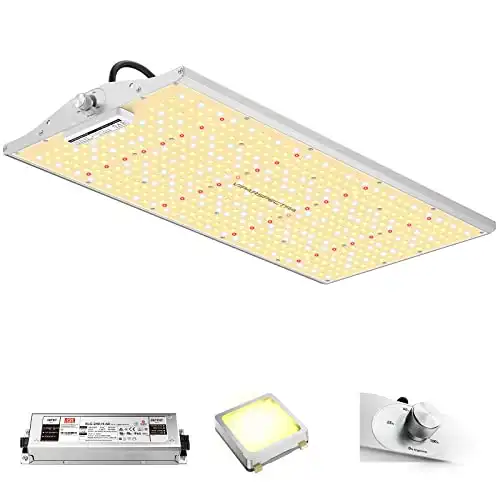
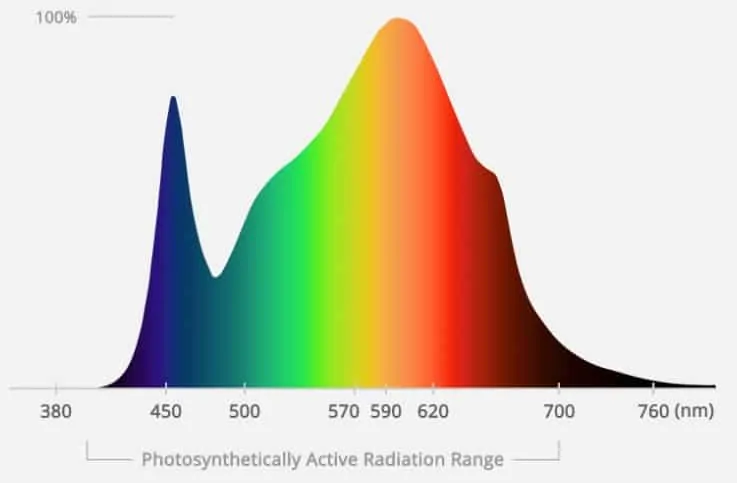
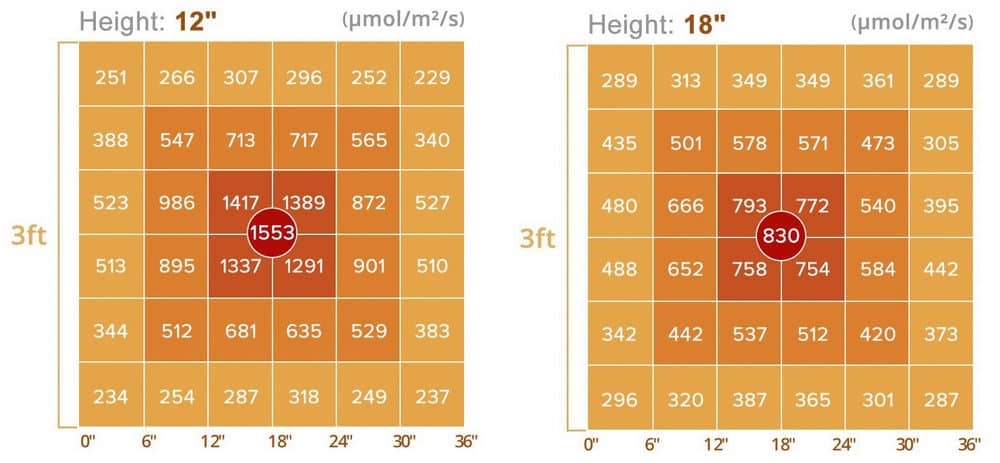
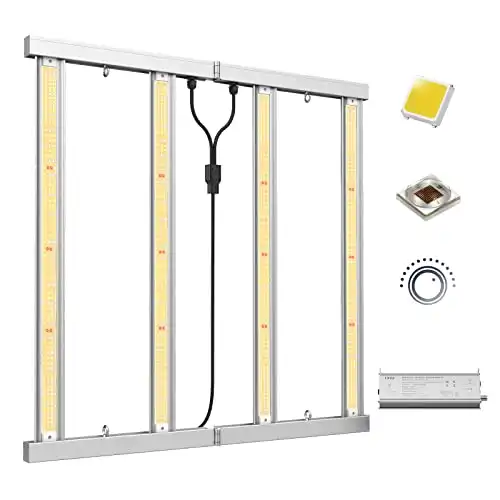
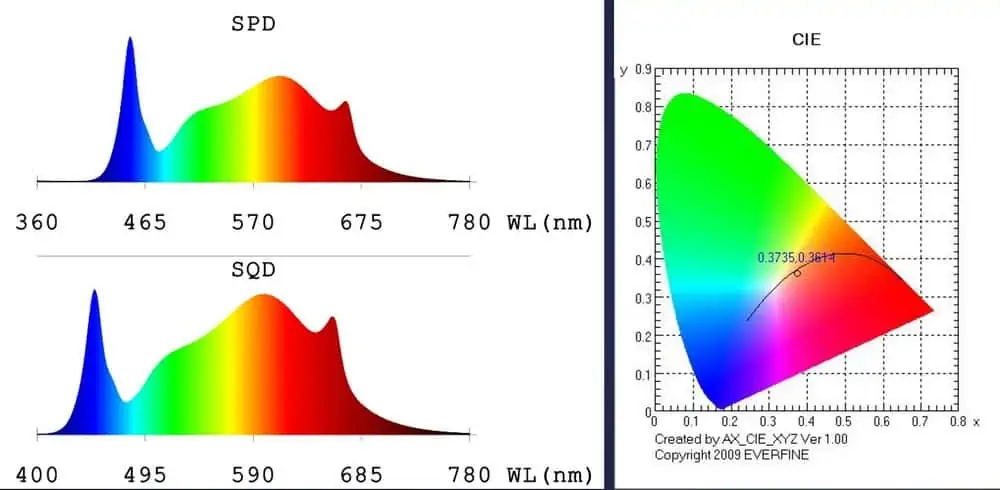
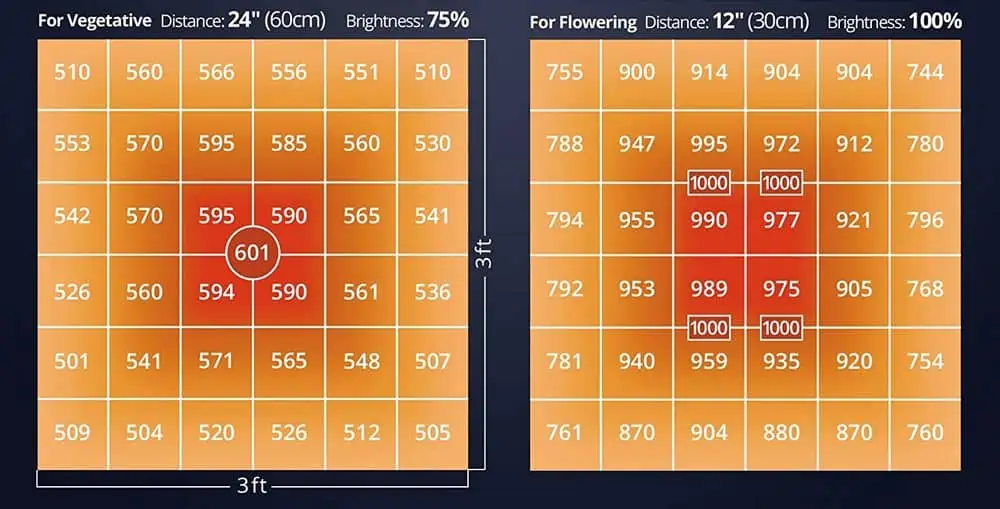
James says
How would you compare a direct head to head with SPIDER FARMER SF-1000 and SF-2000? Seems like they use the same Samusung chips, except the IR LED is 730nm vs spiders 760nm. How does this affect the flowering? Also at 240 watt vs 200watt, do you think they are just overdriving the same chips with a larger Meanwell driver, and thus need a bigger heatsink?
We all know now that with LEDs that if you can get the same output with lower wattage, the lower wattage is better efficiency. Whats your take. I appreciate your reviews..
Anonymous says
So if you do your reaseach on the different diodes they use viparspectra also has yellow lights added in the manipulate the actual sun light. Spider farmer only uses 3 different colors. White. Deep red and it red. The extra 200 watts co es from the high efficiency yellow diodes they use making them more efficient in the long run making the plant growth much faster. My spider farmer compared to my viparpsectra had no comparison and shows growth up up to more that an once a week compared to only having the white lights in my spider farmer lights. Also viparpsectra is cheaper for the same size lights. I can get a pack with a 4 xs4000 and a xs2000 for around 750$ saving me almost 200$ if I were to buy two spider farmer light which I have yet to see a pack when I can buy two together and the have a par rating of 2.9 compared to the spider farmer which has a par rating of only 2.7. They are also brighter that spider farmer and have made my crop go up I’ve 20% compared to my room with my spider farmer lights in them because of those yellow lights they added in giving and evtra green light output. Go with viparpsectra all the way as long as you but the xs series ones. The green ones are comparable to spider farmer but those xs2000 and xs4000s work wonders on buds the are more that 36 inches away from the light. In comparison xs viparpsectra is the was to go for an extra 20-40 watts when the outcome is amazing and shoulder even be compared to spider farmer unless your talking about the older models